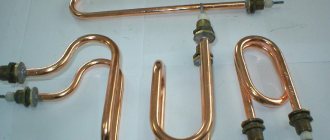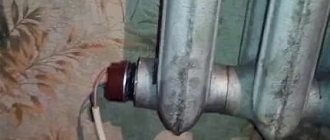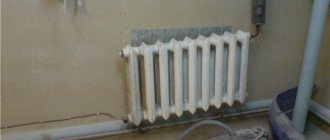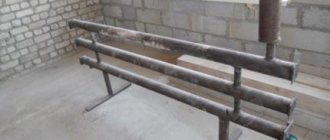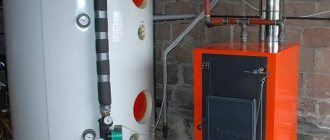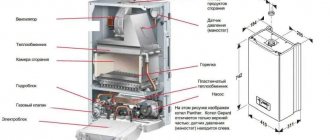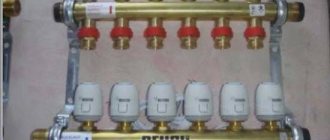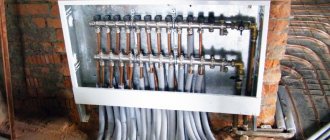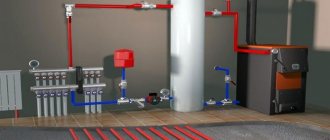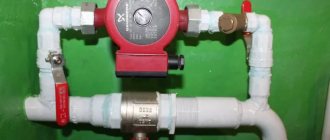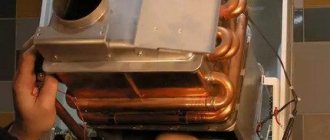Electric heating elements have not changed their design for decades and remain in demand in heating equipment. The shape of these devices and construction materials change, but the principle of operation and efficiency remain unchanged. For a competent selection, information about the differences and characteristics will be useful. Do you agree?
You will learn what heating elements for heating are and how they work. We have described in detail the types of heating elements and provided indisputable arguments for an informed choice of the optimal type. Taking into account our recommendations, you will purchase the required device without errors.
What are electric heaters?
Nowadays, tubular electric heaters for heating are popular, they consist of one or several nichrome spirals in a metal shell. Periclast is placed between the spiral and the shell - this material has excellent insulating qualities.
Modern devices have heating elements that have good strength and at the same time can change their size and shape when exposed to high temperatures. At the same time, TENs do not change their technical characteristics. These electric heating elements are used in the production of not only heating equipment for domestic purposes, but also various industrial devices. Heating elements in industrial devices must have high power. Any tubular element, regardless of its type, has a long service life.
Today there are several types of heating elements produced by manufacturers of electric heating equipment. First of all, they differ in the manufacturing method, but also have other features. Manufacturers take into account the needs and interests of consumers: some heating devices are produced in large quantities, while others are produced in small quantities. Heating equipment produced in small quantities is usually used in heating systems that have certain features. Accordingly, electric heating elements in such devices are more expensive.
Bottom line
Today, more and more people want to switch from traditional heating systems to alternative ones. Every year, any type of fuel increases in price, and this cannot but affect the family budget. Thus, waiting for heating prices to go down means dreaming about the impossible. In many developed countries, specialists and scientists try every year to solve the problem of alternative heating.
Today, there are several fairly popular types of alternative heating systems, but they are effective only under certain conditions.
The most advertised heating system option is solar panels. Such developments are effective only in those regions where the sun shines at least 15-20 days a month. Wind generators are available in many developed countries, but they are not entirely accessible to the average consumer.
For ordinary consumers, there are several more options for heating systems - magnetic heating, electric heating panels and gel heating systems.
Tubular electric heaters
Tubular electric heating elements for home heating are used very widely. They are also installed in many devices operating from the electrical network. Thanks to tubular heating elements, the coolant is heated through convection, thermal conductivity and radiation. Thus, electricity is converted into thermal energy.
Such TENs have the following features:
- the tube diameter is 6-18.5 millimeters;
- element length – 20-600 centimeters;
- the tube can be made of steel or stainless steel; there are also products made of titanium, but they are very expensive;
- the device configuration can be absolutely any;
- TEN parameters such as power and performance depend on consumer requirements.
Heaters are often installed in heating radiators. It is thanks to their functionality that they have become widespread.
Installation
You can install the heating element yourself. Progress:
- Remove the plug from the radiator.
- Mount the device using threads and gaskets.
It is necessary to take into account that the mounts included with the device are fragile. Installation of the device must be done carefully, without using force.
During installation, it is necessary to take into account that due to the heating element, the pressure in the radiator increases. It is advisable to install a valve on the battery to adjust the pressure in the system.
For the best effect, it is advisable to install the device at the bottom of the radiator.
Finned tubular type electric heaters
Finned heaters also belong to the tubular type of elements, but they also have ribs that are located in planes perpendicular to the axis of the heater tube. Such ribs are made from metal tape, and they are attached to the tube using washers and clamping nuts. The device itself is made from stainless steel or structural steel.
This type of heating elements are used in heating devices that heat air or gas. They are often found in devices such as thermal curtains or convectors. They are used to heat rooms using thermal air mass.
Rules of operation and maintenance
In order for the heating element installed in the heating battery to serve as long as possible, the following rules are observed:
- The heater turns on only if there is water in the battery. If liquid gets on the already heated tube of the device, a small thermal explosion may occur. As a result, not only the heating element will fail: the heating battery may be damaged.
- During operation of the device, scale will form on its surface, which must be cleaned off periodically. The recommended maintenance schedule is once every three months. If the thickness of scale on the heating tube exceeds 2 millimeters, heat transfer will decrease and the device may fail.
- To eliminate possible voltage surges, it is recommended to connect the heating element through an uninterruptible power supply or stabilizer. When installed, the heater is grounded.
- Manufacturers recommend using only distilled water as a coolant. In apartment buildings with a common riser, it is unrealistic to comply with this requirement, so it is necessary to clean the heating elements from scale more often.
Block electric heaters
This heating element for heating a house is used in cases where it is necessary to increase the power of the heating device. Typically, these heating elements are used in heating equipment in which liquid - water, oil, etc. - acts as a coolant. A distinctive characteristic of these elements is their fastening to the heating device. There are two types of mounting method: threaded or flanged. The most popular are heaters with flange mounting.
Electric heating heater blocks can be used many times in various heating appliances. If an element burns out, it will not be difficult to replace it with a new one. Such heating elements are often used for heating boilers.
Operating principle of heating elements
The heating element works according to the following principle. When connected to the network, the internal spiral is heated and energy is transferred to the thermal conductor and the outer shell. The heat is then transferred to the surrounding fluid, air or solid material.
When heating a heating element immersed in oil or water, convection currents are created around the tube, which mix the coolant and contribute to its uniform heating.
Electric boilers are known for their reliability and maintainability. They do not have many complex parts, so they are easy to operate and maintain.
In liquid-free heating devices, the heating temperature is usually limited so as not to damage surrounding parts or cause a fire.
To speed up heat transfer, they often use a fan, which circulates air both inside the device and in the room surrounding it.
Cartridge electric heaters
Cartridge-type electric heaters are not used in domestic conditions for heating premises. They act as an element of a mold in the production of any products, in other words, they are part of industrial equipment.
The main difference between this type of electric heaters is the stainless steel shell. In a cartridge heating element, it is polished as much as possible. This is specifically done so that the heater fits into the mold, but at the same time there is a small gap between the tube and the walls. They insert it tightly, and the standard gap does not exceed 0.02 millimeters.
Criterias of choice
When selecting a heating element for a radiator, you should take into account its technical characteristics, as well as the parameters of the battery. The main factors influencing the choice of device are:
- Power. In rooms with good thermal insulation properties, heaters from 2 to 3 kilowatts can be installed. In older buildings, it is best to use heating elements with higher power.
- Length of the electric heating tube. It is recommended to purchase heating elements ten centimeters shorter than the battery. Correct selection of the length of the heating device allows you to evenly heat all sections of the radiator.
- Battery Type. In order for the heating element to optimally fit the radiator, you should carefully study its technical data sheet. It specifies which types of batteries the product should be used with.
- Automatic control. Not all models have this option. For ease of use, it is best to purchase heating elements with automation, which are equipped with a thermostat.
The heating element should be ten centimeters shorter than the radiator
The diameter of the electric heater is also taken into account in accordance with the cross-section of the plug on the radiator. It is important to correctly determine the placement of the thread.
It is necessary to purchase only high-quality heating elements from trusted manufacturers. Before purchasing an electrical appliance, you should check its integrity and serviceability.
Electric heaters with thermostat
Heating heaters with a thermostat are currently the most common. Their main purpose is to heat the liquid. Heaters with thermostats are installed on almost all equipment that is used to heat water. The maximum temperature to which heating elements for a radiator with a thermostat can heat the coolant is 80 degrees.
The heater with a thermostat is made of nickel-chromium wire. The wire inside the tube of the device with an electric thermostat is filled with a special compressed powder, which is magnesium oxide and has excellent insulating properties, but at the same time has high thermal conductivity. You can build such a heating element into an electric heating battery.
Power calculations
In order for the battery to fully warm up, it is necessary to check the amount of coolant.
To select an electric heater of optimal power, you must first carry out calculations.
- The power of an electrical appliance is determined by the amount of heat that is required to heat the room. To heat 1 square meter of a room you need to spend 100 V. It is important to consider that the power and length of the heating elements must correspond to the needs of the radiators.
- You will need to calculate the volume of coolant in the structure. Even the most powerful heating elements will not be efficient enough if there is not enough coolant (liquid) in the batteries. The volume of a cast iron battery ranges from 0.6-1.5 liters depending on the model; in aluminum radiators it is only 0.2 liters.
Approximately for every 1 kW of heater power, 15 liters of coolant are taken. Based on these data, the required number of sections and the power of the electrical device are calculated.
Using TENs
Recently, more and more people are thinking about the possibility of autonomous heating of their home. Every year the cost of traditional heating increases, so quite often with the help of an autonomous system there is a chance to save money. Also, sometimes there is simply no possibility of connecting to a central heating system - this is especially true for holiday villages. The only option to heat the house in this case is to install a heating boiler. Solid fuel and gas boilers continue to be the most popular, but their use is also not always possible - access to the main gas pipeline is not always available.
The best way out of such situations is to install electric heating equipment, since electrical networks are available almost everywhere. The main element of any such heating device is TEN. The efficiency of the heating system largely depends on its type. Typically, household heating equipment uses tubular heating elements, as well as elements with a thermostat. The latter make it possible to regulate the operation of the heating system. Electric heating systems are very convenient to use: they do not emit harmful substances, since they do not form combustion products, do not require installation in a separate room, are safe to use, and are easy to install and adjust. But still, when installing electric heating equipment, you should first check whether the electrical network can withstand the high load. You also need to prepare in advance for the fact that you will have to pay a lot of money for electricity.
How to choose a heating element for heating equipment?
When choosing a heating element to replace in a water heater or radiator, you need to pay attention to its power, design, tube length and the availability of additional capabilities. Therefore, before purchasing, you need to find out as much as possible about all its characteristics.
Calculation of device power
The high power of a heating element is not always a positive quality.
When choosing, it is important to consider several factors that are related to the level of energy consumption:
- maximum heat transfer power of the heating device as a whole;
- electrical wiring options;
- room volume.
You cannot buy a device with a power that is more than 75% of the maximum heat transfer level of heating equipment.
For example, there is a radiator with 10 sections, each of which releases 150 W of heat to the air, a total of 1.5 kW. When installing an electric heater with a power of 2 kW into it, the surface of the battery will not be able to quickly release all the energy generated. As a result, the heating element will constantly turn off due to overheating.
The reason for the rapid breakdown of the heating element may be the incorrect choice of device power. As a result of systemic overheating of the coil, it burns out over time.
In apartments with worn-out wiring, the constant load on the outlet should not exceed 1.5-2 kW, otherwise it may catch fire and lead to dire consequences. Therefore, before purchasing a heating element, you need to check the condition of the wiring and, if necessary, dismantle the old one and install a new electrical network.
When the issue with electrical equipment and equipment capabilities has been resolved, you can begin to calculate the required power to maintain a comfortable temperature in the room.
In well-insulated houses and apartments, a level of 40 W/m3 will be sufficient. And if there are cracks in the windows, the heating power should be increased to 60-80 W/m3. You can buy a specific model only after taking into account all the energy factors described above.
Consideration of design features
Most heating elements have an alloy steel shell, which provides strength and resistance to corrosion. Copper devices are used primarily in water heaters, although there are no restrictions on their use in homemade radiators.
In cast iron and steel radiators, the use of heating elements made of non-ferrous metals is undesirable. This can lead to accelerated wear of materials and connections.
Also, when choosing, it is necessary to take into account the direction of the thread of the plug, which can be right or left. Different models of electric heaters also differ in flange diameter. They can range in size from 0.5 to 1.25 inches.
Typically, a heating element from a good manufacturer comes with a brief instruction manual that describes its design parameters. Studying them will help you buy a device that will exactly fit your existing heating equipment.
Heating tube length
The length of the tube is one of the main characteristics that determine the efficiency of the device.
Its large length with equal power leads to an increase in the surface area of the electric heater and acceleration of heat exchange with the working environment. This has a positive effect on the durability of the heating element and the coolant circulation rate.
Heating elements with a long tube are ideal for installation in homemade registers, which are convenient for heating large rooms and outbuildings
It is desirable that the tube runs along the entire length of the working area of the heating device, without reaching the opposite wall by 6-10 cm. This recommendation will allow you to quickly and evenly warm up the coolant.
Availability of additional functionality
It is not always necessary to overpay for the additional capabilities of heating elements. If the heating device is used as an auxiliary device and does not have its own built-in automation, then purchasing a model with a thermostat makes sense.
But if a radiator or electric convector has its own temperature sensors and temperature control mechanisms, additional functions will remain unclaimed.
The electronics built into the heating element plug must have safety mechanisms so that if the control board breaks down, a fire does not occur.
Therefore, it is recommended to purchase expensive electric heaters with built-in automation only if there is a clear need for such equipment. If you need to individually select the temperature background, it is better to buy a thermostat for an outlet that can be used periodically.
As for the manufacturers of heating elements, their choice is not important. The main suppliers are companies from Russia, Ukraine, Turkey and Italy. The quality of their products is approximately the same, so there is no point in overpaying for the brand.
TOP 9: ETS 200
Review
These heat accumulators for heating boilers have a steel body and heat-resistant insulation on top. Underneath there are blocks that accumulate heat. They are made of composite material with high thermal conductivity, which are heated using heating elements.
For faster heating, a fan is built into the design.
Important: In order to regulate the room temperature, in other words to control the discharge, you need a built-in regulator, which is not included in the package, so it must be purchased separately. There is a switch on the front panel, thanks to which it is possible to manually adjust the charge volume
There is a switch on the front panel, thanks to which it is possible to manually adjust the charge volume.
In order to be able to set the charging start and end time (during the energy payment benefits are valid), it is necessary to install an electric siren (signal) or a timer. It's also not included in the kit. It can be purchased for an additional fee.
Technical indicators
- Power value, kW – 2.0;
- Dimensions, mm – 650x605x245 (HxWxD);
- Weight, kg – 118;
- Operating temperature range, degrees - +7-+30;
- Manufacturer – Germany;
- Mounting type – floor;
- Warranty period – 3 years.
The purpose of the model is to regulate the output of heat received from one or another source of heat for effective heating of the room.
Device
There is a tubular heater inside, made of high-quality steel. It heats the stones, which are capable of accumulating heat; they release it, cooling naturally, to the air passing through them under the influence of a fan.
By installing a sensor in a room, you can regulate heat with high precision, saving (due to the built-in battery) a significant portion of electrical energy.
Price
| Where can I buy | Price in rubles |
| https://tepla.shop/product/ets-200?_openstat=bWFya2V0LnlhbmRleC5ydTvQotC10L_Qu9C-0L3QsNC60L7Qv9C40YLQtdC70YwgKNCi0LXQv9C70L7QsNC60LrRg9C80YPQu9GP0YLQvtGAKSBTVElFQ kVMIEVMVFJPTiBFVFMgMjAwO1R2VmMzTG5DdG56OGgwQ25OODhVdnc7&frommarket=https%3A//market.yandex.ru/catalog/69097/list%3Ftext%3D%D1%82%D0%B5%D0 %BF%D0%25B&ymclid=285742735834950992200004 | 55000 |
| https://www.vseinstrumenti.ru/klimat/obogrevateli/konvektory/elektricheskie/stiebel_eltron/ets_200_74484/ | 29900 |
| https://thermomir.ru/subitem/teploakkumulyatoryi-stiebel-eltron-ets-200 | 55000 |
| https://aley.ru/cash/info/11039.html | 49500 |
| https://otmorozok.com/index.php?route=product/product&product_id=2908 | 77600 |
TOP 3: HAJDU AQ PT 1000
Job
The TOP 10 models occupying 3rd place can work from several sources (depending on the execution):
- from the energy of the Sun;
- gas boilers;
- coal, etc.
Device
It consists of:
- steel container (tank);
- thermal insulation made of polyurethane;
- protective casing;
- artificial leather covers.
There is no corrosion protection inside, so the tank can only be used for its intended purpose. It is not suitable for storing drinking water.
Insulation
Like its analogues, it is made of polyurethane foam, which maintains the water temperature for a long time without requiring heating. The thickness of the protection is 10 cm. For the casing, as mentioned, artificial leather is used.
The casing is insulated and can be easily removed. This is convenient when transporting, installing and dismantling the device.
Advantages
The main one is the possibility of temporary equalization of discrepancies in heat production and consumption.
Important:
- Heat exchangers with storage tanks must not be exposed to high pressures. Is it dangerous!
- Installation of a safety valve is required, purchased at an additional cost.
- The installation of any water shut-off valves between the valve and the storage tank is prohibited.
Peculiarities
- Ergonomics.
- Good thermal insulation.
- Well-placed pipes.
- Removable insulation and casing.
- Painted outer surface.
- Possibility of connecting a heating electric cartridge.
- Compatible with various types of boilers.
- Long service life.
- Convenient installation dimensions.
Technical specifications
- Volume – 750 l;
- Weight - 93 kg;
- Storage type water heater;
- Heating method: electric;
- Mounting – floor;
- Diameter with and without insulation – 99 and 79 cm;
- Height – 191 cm;
- The internal tank is made of steel;
- Anti-corrosion protection – not provided;
- Working pressure – 3 bar;
- Manufacturer - Hajdu, Hungary;
- Voltage – 220 V.
